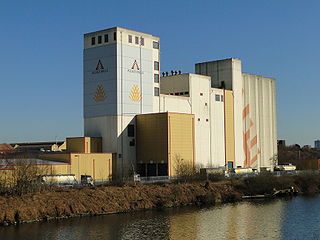
George Franklin Barber was an American architect best known for his residential designs, which he marketed worldwide through a series of mail-order catalogs. One of the most successful domestic architects of the late Victorian period in the United States, Barber's plans were used for houses in all 50 U.S. states, and in nations as far away as Japan and the Philippines. Over four dozen Barber houses are individually listed on the National Register of Historic Places, and several dozen more are listed as part of historic districts.

Statesview, or States View, is a historic house located on South Peters Road off Kingston Pike in Knoxville, Tennessee, United States. Built in 1805 by early Knoxville architect Thomas Hope and rebuilt in 1823 following a fire, Statesview was originally the home of surveyor Charles McClung (1761–1835). Following McClung's death, newspaper publisher Frederick Heiskell (1786–1882) purchased the house and estate, which he renamed "Fruit Hill." The house is listed on the National Register of Historic Places for its architecture and political significance.
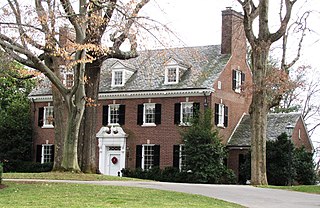
The Benjamin Morton House, also known as the Morton-Bush House, is a historic brick home located at 4084 Kingston Pike in Knoxville, Tennessee, United States.
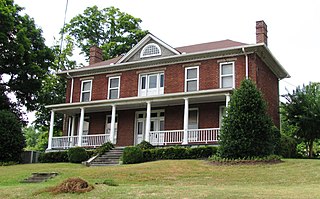
The Samuel McCammon House, also known as James White's House Site, is a historic house at 1715 Riverside Drive in Knoxville, Tennessee, United States. It is on the National Register of Historic Places.

The Blount Mansion, also known as William Blount Mansion, located at 200 West Hill Avenue in downtown Knoxville, Tennessee, was the home of the only territorial governor of the Southwest Territory, William Blount (1749–1800). Blount, also a signer of the United States Constitution and a U.S. Senator from Tennessee, lived on the property with his family and ten African-American slaves. The mansion served as the de facto capitol of the Southwest Territory. In 1796, much of the Tennessee Constitution was drafted in Governor Blount's office at the mansion. Tennessee state historian John Trotwood Moore once called Blount Mansion "the most important historical spot in Tennessee."

Middlebrook is a historic house located at 4001 Middlebrook Pike in Knoxville, Tennessee. It was constructed circa 1845 by Gideon Morgan Hazen, and is one of the oldest existing frame residences in Knoxville.
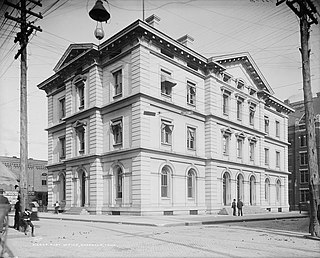
The Old Customs House, also called the Old Post Office, is a historic building located at the corner of Clinch Avenue and Market Street in Knoxville, Tennessee, United States. Completed in 1874, it was the city's first federal building. It housed the federal courts, excise offices and post office until 1933. From 1936 to 1976, it was used by the Tennessee Valley Authority for offices. Expanded in 2004, the building is currently home to the East Tennessee History Center, which includes the Lawson McGhee Library's Calvin M. McClung Historical Collection, the Knox County Archives, and the East Tennessee Historical Society's headquarters and museum. The building is listed on the National Register of Historic Places for its architectural significance.
This is a list of the National Register of Historic Places listings in Knox County, Tennessee.
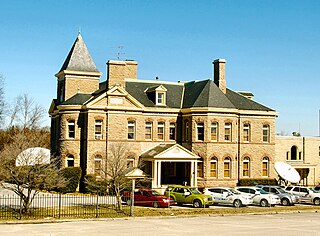
Greystone, also called the Camp House, is a prominent historic home in Knoxville, Tennessee, that houses the studios and offices of WATE-TV. It is an imposing structure, and is on the National Register of Historic Places. The mansion is located at 1306 Broadway.

The Colonel John Williams House in Knoxville, Tennessee, United States, was built in 1825–1826 by the slaves of Melinda White Williams, wife of Colonel John Williams, while he was away serving as Chargé d'Affaires to Guatemala for President John Quincy Adams. The home is designed in the Federal style, with a noteworthy pediment with a fanlight at the roofline.

The Daniel House is a historic home located at 2701 Woodson Drive in Knoxville, Tennessee. It was designed in 1948–1949 by James W. Fitzgibbon, and constructed by George W. Qualls.

The Knox County Courthouse is a historic building located at 300 Main Street in Knoxville, Tennessee, United States. Built in 1886, it served as Knox County's courthouse until the completion of the City-County Building in 1980, and continues to house offices for several county departments. John Sevier, Tennessee's first governor, is buried on the courthouse lawn. The courthouse is listed on the National Register of Historic Places for its architecture and its role in the county's political history.

Church Street United Methodist Church is a United Methodist church located on Henley Street in downtown Knoxville, Tennessee. The church building is considered a Knoxville landmark and is listed on the National Register of Historic Places.
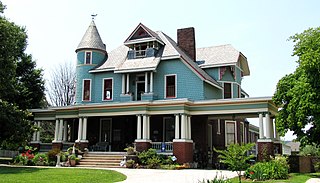
Old North Knoxville is a neighborhood in Knoxville, Tennessee, United States, located just north of the city's downtown area. Initially established as the town of North Knoxville in 1889, the area was a prominent suburb for Knoxville's upper middle and professional classes until the 1950s. After a period of decline, preservationists began restoring many of the neighborhood's houses in the 1980s. In 1992, over 400 houses and secondary structures in the neighborhood were added to the National Register of Historic Places as the Old North Knoxville Historic District.

The Baumann family was a family of American architects who practiced in Knoxville, Tennessee, and the surrounding region, in the late 19th and early 20th centuries. It included Joseph F. Baumann (1844–1920), his brother, Albert B. Baumann, Sr. (1861–1942), and Albert's son, Albert B. Baumann, Jr. (1897–1952). Buildings designed by the Baumanns include the Mall Building (1875), the Church of the Immaculate Conception (1886), Minvilla (1913), the Andrew Johnson Building (1930), and the Knoxville Post Office (1934).

The John Pope House, also known as Eastview, is a historic house in Burwood, Williamson County, Tennessee. It incorporates hall-parlor plan architecture and single pen architecture.

The C. R. Joy House, also known as The Grande Anne Bed & Breakfast, is a historic building located in Keokuk, Iowa, United States. It was individually listed on the National Register of Historic Places in 1997. In 2002 it was included as a contributing property in The Park Place-Grand Avenue Residential District.

Burwood, Tennessee is an unincorporated community in southeastern Williamson County, Tennessee.

The United States Post Office and Courthouse, commonly called the Knoxville Post Office, is a state building located at 501 Main Street in Knoxville, Tennessee, United States. Constructed in 1934 for use as a post office and federal courthouse, the building contains numerous Art Deco and Moderne elements, and is clad in Tennessee marble. While the building is still used as a branch post office, the court section is now used by the state courts. The building is listed on the National Register of Historic Places for its architecture and political significance.

The George Ferris Mansion in Rawlins, Wyoming is one of the most significant Queen Anne style buildings in Wyoming. Built during 1899-1903, the house's design was published by the Knoxville, Tennessee architectural firm of Barber and Klutz in a pattern book. The house was built for George and Julia Ferris.




